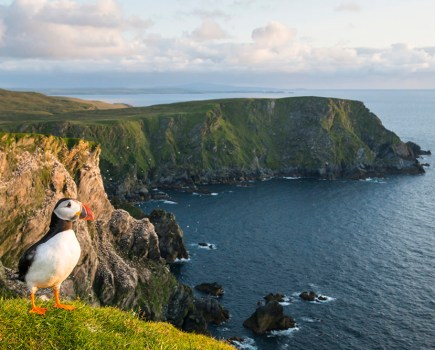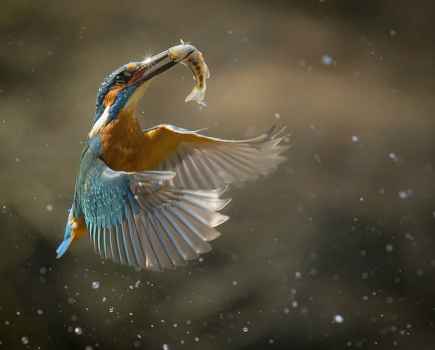What’s your advice when it comes to kit?
Gear’s everything, but you shouldn’t let it take over your safari. You want to take hundreds of good pictures, not be worrying about your kit. I’d love to say it’s all about the photographer, but nowadays it isn’t. The big, heavy lenses do give you faster, sharper and often quicker pictures. I always think there are two critical lenses you should have with you: a good long lens and a good wide one.
What makes a great safari shot?
Thousands of people go on safaris all over the world and they all come back with very similar photographs. What I try to teach people more than anything is to come back with something that no one else has, nobody else can possibly take, and finally, something that will elicit a strong opinion, even if it’s a bad one. It’s much better than someone saying, ‘Oh, I can see what you’ve tried to do there,’ or, ‘Oh, that’s nice’. It’s just patronising.
Be bold with the photograph, whether that’s the shutter speed you use, angle, time of day, backlighting or all these things. By combining these facets, you can get something extraordinary. We’ve all seen the classic shot of a lion lying beautifully with sun on it. However, a lion shaking off a load of water, or a lion moving through long grass at a 1/3sec, is so much more exciting.
How important is editing?
You’ve got to be brutal. I sometimes speak to people at the end of a safari and they’ve taken 4,000 images. I don’t want to be the friend who has to go round and look at all those. At the end of the day when we’re driving back and it’s a bit darker, I’ll delete the garbage just by using the screen on the camera. My default isn’t, ‘I’ll fix that later’ – I just bin them. If you’ve got to spend forever processing images, that’s not photography. It’s not what you took and it’s misrepresentation. So I spend only 10-20 seconds processing in Lightroom (only more if my slow shutter speed has revealed marks on the sensor!) and then I’ll back up the best ones, rather than importing thousands onto a hard drive, which is where they’ll stay. At the end of a safari, I might have 30-35 images that I particularly like.
Why the Mara?
The simple fact is that it has more animals than anywhere else. People may have heard of the Kruger National Park in South Africa, but you take a square kilometre of the Kruger and a square kilometre of the Mara and there are 10-11 times as many animals. That’s important, but most importantly, you have these open plains of grasslands that make it not only easier to see, but also make the backdrops so dramatic. Far better than if you’re trawling round thick, poorly lit bush looking for animals.
Masai Mara means ‘spotted plains’, and you have these amazing acacia trees that dot the plains as well as towering escarpments. You also have a sky that’s not only inspirational, but also frightening and photogenic. It has the best concentration of big cats.
We can drive off-road in the conservancies and it’s extraordinarily prolific and we’re often on our own. Add things together with the best guides in the business and vehicles designed for photography, and it’s an intoxicating cocktail.
Paul’s top tips
Research
Do plenty of research on the actual safari you’re taking – what the operator promises, and what he or she can actually deliver. Also, research the best times of year to see wildlife and particular species. If the cost appears desperately cheap, don’t expect much time in the places that matter. The most important parts of any safari are the guides (are they properly qualified?), the vehicles (are they properly designed for long days in the saddle?) and time – quality time actually in the game areas, not just driving there crammed in a minibus.
Kit
Spend your money on a fast lens, rather than be talked into a high-tech, top-of-the-range camera. Most DSLRs know their onions now, but can be let down by shoddy lenses.
F-stop not mm
Don’t be seduced by a huge millimetre number if the f-stop is too high. Just like a good pair of binoculars, the quality of the glass is the medicine here, not the distance multiplied.
Graft
Get up early, as you want to be in position long before dawn. If the safari advertises that you go out at dawn, you have booked the wrong one. Be prepared for long, hot days but these long hours give you time to assess your quarry properly.
Be bold
I’d prefer to see an audacious image with several flaws than yet another portrait in good light that I’ve seen too many times before. If you’re prepared to fail when gambling on shots, the potential rewards are huge.
Sorcery
Digital manipulation – just don’t. Areas like the Mara are the most prolific game areas in the world. You get many opportunities and if you then feel you have to spend forever processing your image, you’re a fraud – no doubt a computer nerd of note, but a fraud all the same. If your image takes more than 15 seconds to process it’s not really yours, so delete it. I want to see what people take, not what they manufacture. So get it right, or almost right, when you press the shutter.
Enjoy it
If you relax, study the animals and try to guess their movements – then experiment a bit – your end results will be far better.
EXODUS TRAVELS offers a wide range of wildlife and discovery holidays. Paul Goldstein guides various photographic departures throughout the year. The trip Phil took was based on a Kenyan Photographic Safari run by Exodus Travels at Paul’s own tented camp in the Masai Mara. Prices start from £3,799 and include flights from London, accommodation, game drives every day and all meals, as well as photographic coaching from Paul.
Keen wildlife photographers will also be interested in Paul Goldstein, and his good friend, Mark Carwardine’s photographic charter in Spitsbergen, Norway (June 2016), offering a chance to explore the remarkable Svalbard archipelago in 24-hour daylight. Prices start at £3,899 excluding flights, but including 11 nights’ accommodation on the ship, all meals and coaching by both Paul and Mark.
Amateur Photographer readers will receive a signed copy of Paul’s most recent photographic book, Predator, when booking either trip by 31 October 2015. Just mention Amateur Photographer at the time of booking. Call 0845 863 9672 or visit www.exodus.co.uk.







